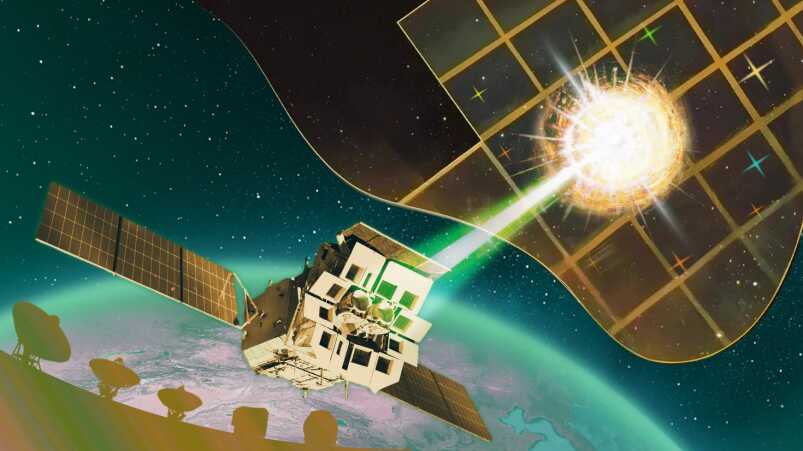Einstein Probe Detects Mysterious Ancient Explosion
The Einstein Probe (EP), a mission led by the Chinese Academy of Sciences (CAS) in collaboration with the European Space Agency (ESA), the Max Planck Institute for Extraterrestrial Physics (MPE) in Germany, and the Centre National d'Études Spatiales (CNES), has detected an unusual cosmic event that may challenge existing theories regarding gamma-ray bursts (GRBs). On March 15, 2024, EP's Wide-field X-ray Telescope (WXT) recorded a prolonged burst of low-energy X-rays that lasted over 17 minutes. This fast X-ray transient (FXRT), designated as EP240315a, originated from a distance of 12.5 billion light-years away, dating back to when the Universe was only about 10% of its current age.
For Yuan Liu from the National Astronomical Observatories, Chinese Academy of Sciences (NAOC), who designed the onboard trigger algorithm for WXT, the detection was a special moment. "It was really good to see the algorithm working fine for this event," he said.
Follow-up observations revealed that EP240315a was associated with a gamma-ray burst, GRB 240315C. However, the X-ray burst occurred over six minutes before the gamma-ray emission, an unprecedented delay. "Such a long delay has never been previously observed," said Hui Sun from the EP Science Center at NAOC.
This suggests that we may need to rethink our models for gamma-ray bursts, according to Weimin Yuan, PI of EP and a researcher at NAOC. “This is just the starting point and really demonstrates the potential of Einstein Probe to detect cosmic explosions from the early Universe,” He added.
The rapid detection of EP240315a allowed for collaboration with Roberto Ricci from the University of Rome Tor Vergata, Italy, who monitored the burst at radio wavelengths. "These results show that a substantial fraction of FXRTs may be associated with GRBs, and sensitive X-ray monitors like EP can pinpoint them in the distant Universe," Ricci said. "Combining the power of X-ray and radio observations hands us a new way to explore these ancient explosions even without detecting their gamma rays."
Xuefeng Wu from the Purple Mountain Observatory, CAS, emphasized the mission's significance: "The detection of EP240315a demonstrates Einstein Probe's great potential for discovering transients from the early Universe. The mission will play an important role in international observations and collaborations."
Erik Kuulkers, ESA EP Project Scientist, added: "As soon as we opened the eyes of Einstein Probe to the sky, it found interesting new phenomena. That's pretty good and should mean that there are a lot more interesting discoveries to come."
The European Space Agency (ESA) has reported on relevant studies, accessible through the following links.
Two related studies have been published: "Soft X-ray prompt emission from the high-redshift gamma-ray burst EP240315a" in Nature Astronomy and "Long-term radio monitoring of the fast X-ray transient EP240315a: evidence for a relativistic jet" in The Astrophysical Journal Letters.
The papers can be accessed at:
https://www.nature.com/articles/s41550-024-02449-8
https://iopscience.iop.org/article/10.3847/2041-8213/ad8b3f

Image title: Einstein Probe detects ancient X-ray burst
Image credit: OPENVERSE/Einstein Probe Science Center